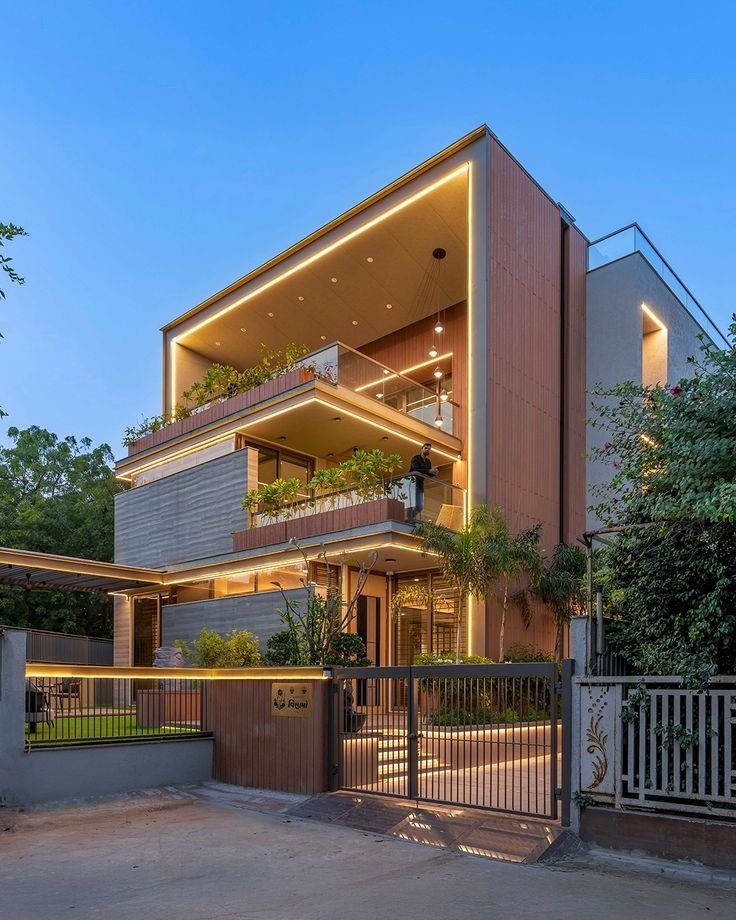The world of architecture is undergoing a transformative shift, and at the heart of this change is artificial intelligence (AI). AI is reshaping how architects design, plan, and construct buildings, offering new tools that boost efficiency, creativity, and precision. By automating tasks, analyzing vast amounts of data, and generating innovative design solutions, AI is becoming a powerful ally in the field of architecture. Let’s explore how AI is revolutionizing the design process and what the future holds for this technology in architecture.
1. AI-Driven Design Optimization
One of the most significant contributions of AI in architecture is its ability to optimize designs based on multiple parameters. AI algorithms can analyze vast datasets, including environmental factors, building materials, and structural requirements, to suggest design solutions that are more efficient, sustainable, and cost-effective.
Generative design is a key AI technique where architects input design goals and constraints, and the AI generates a range of design options. These options can be evaluated for performance, aesthetics, and sustainability. For example, AI can suggest changes in building orientation to maximize natural lighting or recommend materials that minimize environmental impact. This level of precision was previously unattainable without labor-intensive calculations, making AI an invaluable tool in producing better designs faster.
2. Enhanced Sustainability Through AI
Sustainability is one of the most pressing concerns in architecture, and AI is playing a pivotal role in addressing it. By analyzing environmental data—such as sunlight exposure, wind patterns, and temperature fluctuations—AI helps architects design buildings that are energy-efficient and climate-responsive.
AI-powered software can model energy consumption, recommend eco-friendly materials, and predict how a building’s design will perform in different weather conditions. Architects can test various configurations, such as window placement, insulation, and ventilation, to reduce energy consumption and improve the building’s environmental footprint. AI allows architects to create smart, green buildings that are not only aesthetically pleasing but also sustainable.
3. Automating Repetitive Tasks
AI is streamlining the architectural workflow by automating repetitive and time-consuming tasks, allowing architects to focus more on creativity and strategic decision-making. Tasks such as drafting, rendering, and generating construction documents can be handled by AI-powered tools, reducing human error and accelerating project timelines.
For instance, AI-based BIM (Building Information Modeling) tools can automatically generate detailed floor plans, structural drawings, and 3D models, saving architects hours of manual work. AI also aids in project management by tracking deadlines, monitoring budgets, and ensuring compliance with regulations. This automation not only boosts productivity but also ensures that projects stay on schedule and within budget.
4. Personalized Architecture with AI
In an era where customization is key, AI enables architects to deliver personalized designs tailored to individual needs and preferences. By analyzing data such as a client’s lifestyle, usage patterns, and spatial needs, AI can suggest custom design features that make the space more functional and comfortable.
For example, AI can analyze how people use different rooms in their homes and adjust designs to suit their routines. This could involve optimizing the layout for natural light in workspaces or enhancing acoustic performance in entertainment areas. AI’s ability to process user data and provide insights allows architects to offer highly personalized design solutions that cater to specific user behaviors and preferences.
5. Parametric Design: Pushing Creative Boundaries
Parametric design is a technique that allows architects to explore complex geometries and create unique, futuristic structures. AI enhances parametric design by quickly generating and adjusting intricate forms based on input parameters such as size, shape, material, and environmental considerations.
Architects can input variables like solar exposure or structural load, and AI algorithms will generate designs that balance aesthetics, function, and efficiency. This has led to the creation of bold, iconic buildings that push the boundaries of traditional architecture. Structures like the Heydar Aliyev Center in Baku or the Shanghai Tower exemplify how AI-driven parametric design is enabling architects to design fluid, organic forms that redefine urban skylines.

6. AI-Powered Construction and Robotics
Beyond design, AI is also transforming the construction phase of architecture. AI-powered robots and drones are increasingly being used on construction sites to perform tasks like bricklaying, welding, and concrete pouring with precision and speed. These machines can work around the clock, reducing construction time and labor costs while improving safety by performing dangerous tasks that would be risky for human workers.
AI is also being used to monitor construction progress through computer vision systems that analyze real-time data from cameras and sensors on-site. These systems can detect potential issues, such as material defects or structural inconsistencies, before they become costly problems. By ensuring quality control and improving safety, AI is revolutionizing the way buildings are constructed.
7. AI in Urban Planning and Smart Cities
On a larger scale, AI is shaping urban planning by analyzing data related to traffic patterns, population growth, and resource consumption. Urban planners can use AI to simulate how different building configurations and infrastructure layouts will impact a city’s flow, helping to optimize the design of entire neighborhoods or even cities.
AI is also integral to the development of smart cities, where data from connected devices (IoT) is used to optimize city infrastructure in real-time. Smart buildings integrated into these cities use AI to control energy use, manage resources, and improve the quality of life for residents. From self-regulating heating systems to AI-powered traffic management, the integration of AI in urban design is transforming cities into efficient, sustainable environments.
8. AI for Historical Preservation and Restoration
Preserving historical buildings and cultural heritage sites is a delicate task, but AI is making it easier by offering tools for accurate restoration and conservation. AI can analyze old photographs, blueprints, and 3D scans to create accurate digital models of historical structures, guiding restoration efforts.
For example, AI was instrumental in recreating parts of the Notre-Dame Cathedral after the 2019 fire. Using AI-powered 3D modeling, architects were able to recreate intricate details of the cathedral’s design and plan the restoration process with precision. AI’s ability to analyze and reconstruct historical data ensures that our architectural heritage is preserved for future generations.
9. AI-Assisted Collaboration
Collaboration is a vital part of architectural projects, and AI is streamlining communication between teams of architects, engineers, and clients. AI-powered platforms enable real-time collaboration on design models, allowing teams to work together more efficiently. These platforms can track changes, offer design suggestions, and even detect potential issues early in the design process, reducing the risk of costly revisions later.
By automating mundane tasks and improving communication across teams, AI ensures that architects can focus on the creative and strategic aspects of their projects while maintaining coordination and accuracy.
Conclusion
The integration of AI in architecture is revolutionizing the design and construction processes, pushing the boundaries of creativity while optimizing efficiency and sustainability. From generative design and smart buildings to AI-driven construction and urban planning, AI is reshaping how we conceive and build our cities. As AI technology continues to evolve, architects will have even more powerful tools at their disposal, driving the future of architecture toward smarter, more sustainable, and innovative solutions.


